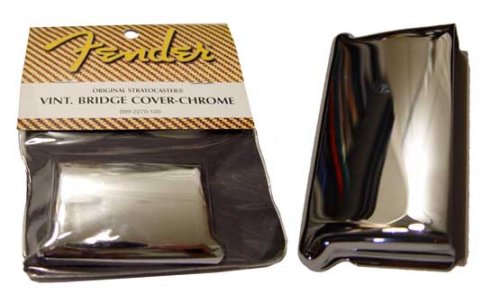 We have just what the doctor ordered. Pickup cover sets to spruce up your favorite Fender(R) instrument. Includes three black pickup covers for Fender Stratocasters(R).
We have just what the doctor ordered. Pickup cover sets to spruce up your favorite Fender(R) instrument. Includes three black pickup covers for Fender Stratocasters(R).Youve made the decision to take up the guitar, but arent exactly sure how to use it. This lesson is the perfect place to start your guitar career. Youll learn all about Electric and Acoustic guitars, their parts and the slight differences between the two.
Lets start with the body of the Acoustic and Electric guitar. This is where any electronic hardware (such as in the Electric guitar) is located. The Acoustic guitar, unlike the Electric, has a sound hole. This is where the sound that you hear comes from when you hit a string. A sound hole serves to amplify the vibration (sound) produced by the strings. Without a sound hole, the sound produced by the vibration of strings on the Acoustic guitar would be minimal.
The Electric guitar, on the other hand, does not have a sound hole. As a result, when you hit a string on the Electric, the sound is very low because the vibration isnt amplified like on the Acoustic. If the Electric guitar is plugged into an amplifier, the sound produced will be as loud or as low as you need it.
On the body of the guitar, youll also find the bridge. The bridge is where the strings on the guitar are threaded through. On the Acoustic guitar, there are also bridge pegs in the bridge which hold one end of the string in place. This isnt the case with the Electric, as the strings are secured to the bridge without the use of a peg.
Attached to the bridge is what is known as a tremolo or whammy bar. This mechanical device, found only on Electric guitars, allows a guitarist to reduce tension on all 6 guitar strings at once.
Also located by the bridge are pick-ups, found in Electric guitars, which amplify the vibrations the strings make. These are used in conjunction with an amplifier. Electric guitars may have as many as three pick-ups, with each having a distinct function.
On Electric guitars, there are a set of Control knobs. Each knob represents a control for the guitar. There are two types of knobs: volume knobs and pick-up knobs. You use the volume knobs to control how much noise the guitar makes, while the pick-up knobs are used to control the pick-ups.
Finally, located by the bridge on most stratocaster Electric guitars is a socket. On other styles of Electric guitars, the socket is located on the side of the body. This small hole, typically found only in Electric Guitars, is where you plug in one end of a guitar cable. The other end of the cable is plugged into an amplifier or computer.
Next, there is the neck, a long piece of wood that is attached to the body and Nut of the guitar. On the neck is the fretboard. There are 20-24 pieces of metal on the fretboard, each representing a fret. Each fret represents a musical note. Additionally, there are inlays (either dots or special designs) on the fretboard. Like the pieces of metal on the guitar, these also serve as a guide to notes. The 12th fret on the guitar, for instance, is commonly represented by two dots.
Connected to the neck is the nut which is connected to the Headstock. On the headstock youll find tuning pegs. The other end of a string is slid through a tuning peg. A tuning peg allows you to either increase or decrease the tension of a string, thereby raising or lowering the sound of the guitar. More information on tuning can be found in our tuning article.
And there you have it. Youve covered a lot of things in this lesson, all of it helpful to your guitar studies. You can now move on to the next lessonlearning how to play the guitar.
Gray Rollins is a featured writer for GuitarsLand.com. If you're interested in learning how to play the guitar, then be sure to check out Jamorama for some great lessons.
john mayer fender stratocaster







